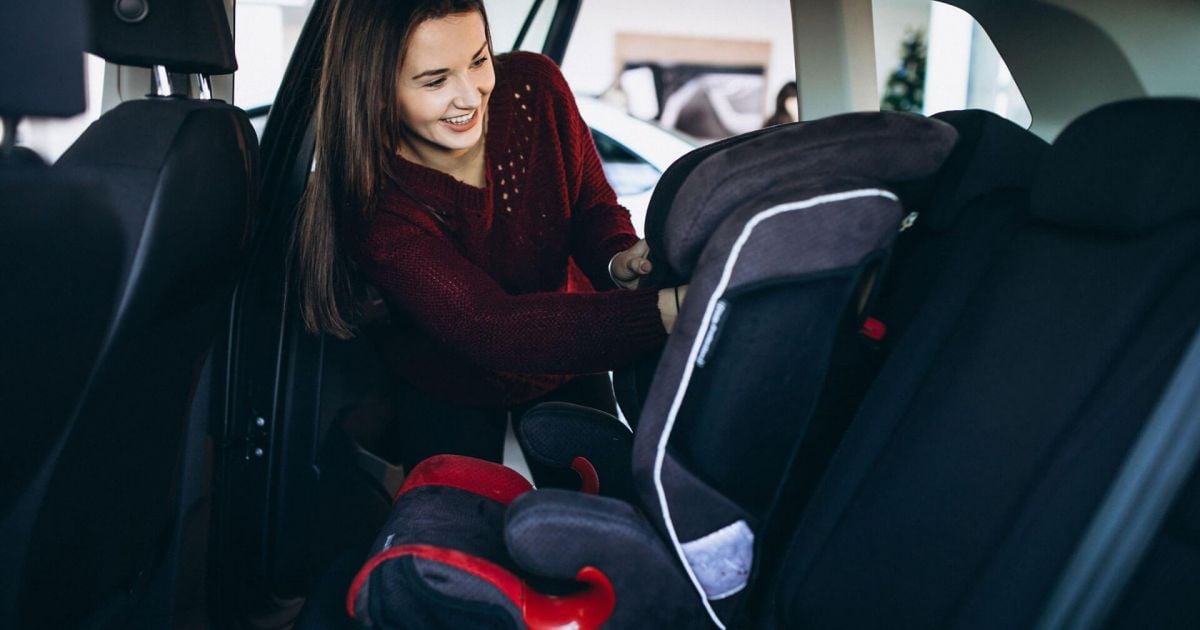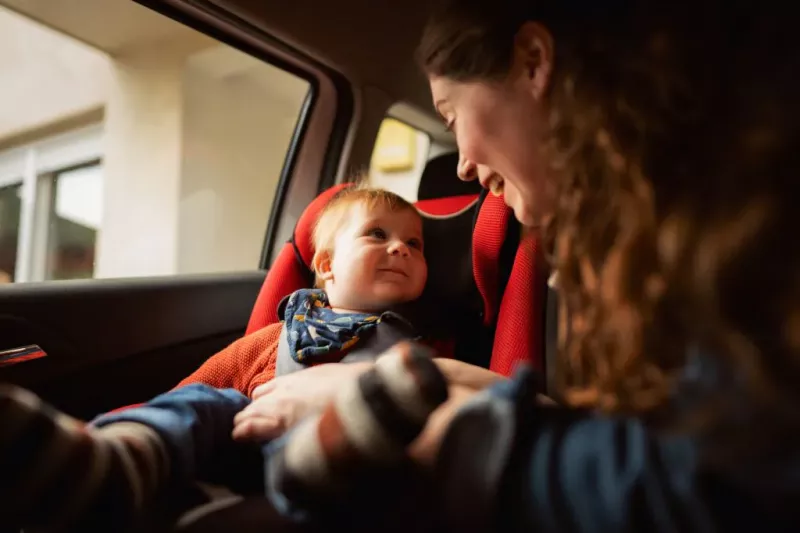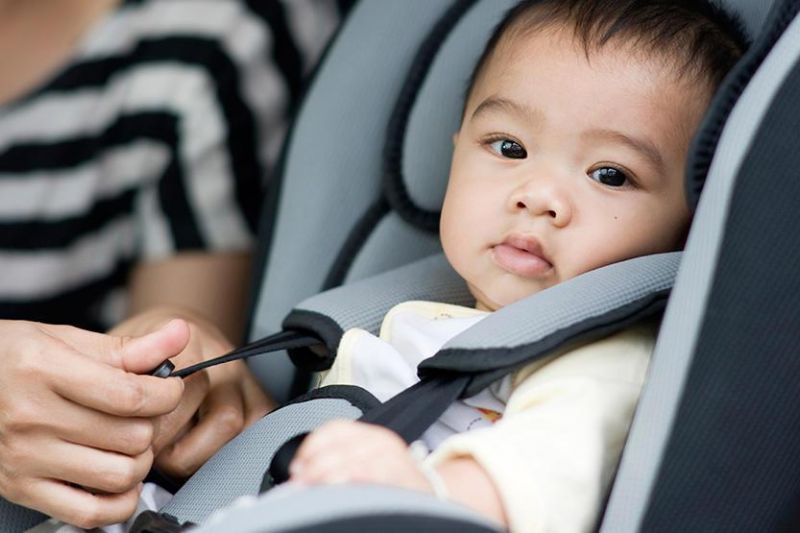It might go against every fibre of your being, but in some parts of Australia it is legal for you to secure your 12-month-old child in just a seatbelt while they’re riding in a taxi. And in other jurisdictions, you can even have them on your lap without a belt at all.
- In most parts of Australia, it’s legal for a one-year-old to ride in a taxi without a child seat
- Some states also allow occupants 16-years or over to hold a child in their lap
- Taxi drivers don’t have to have a child-seat or booster – it can fall to the parent
We’ll cover off these arcane rules and regulations based on each of the different state and territory laws.
New South Wales: Transport for NSW’s road rules state that, while travelling in a taxi:
- children up to the age of 6 months must use a rear-facing child car seat
- children aged between 6 and 12 months must use either a rear‑facing child car seat or a forward-facing child car seat with an inbuilt harness
- children aged over 12 months must use a booster seat or wear a properly adjusted and fastened seatbelt.
It is good to see that a 366-day-old baby is not allowed to ride shotgun, as the same rear-seat rules as in normal cars still apply.
It must be stressed that this should be seen as a last resort, emergency back-up plan only. Taxis aren’t legally required to carry a child seat or booster seat, but most taxi companies will have a vehicle that has such a seat fitted, available to book.
You are allowed to fit your own child-seat or booster when riding in a taxi, and in NSW all taxis must be fitted with an anchor-point for a child restraint.
Victoria: According to Commercial Passenger Vehicles Victoria, there are two specific types of vehicles that need to be considered when looking at child-seat laws – booked vehicles, meaning hire cars and ride-share cars, and unbooked vehicles – taxis.
“Unbooked vehicles (taxis offering rank and hail services) aren’t required to carry child restraints such as capsules, child seats or booster seats.
“If possible, it’s recommended that you take your child’s restraint or booster seat with you. Unbooked vehicles must have at least one point where the straps of a child restraint or booster seat can be securely attached.
“Under the Road Safety Road Rules 2017 (the rules), infants under 12-months old must be carried in the back seat of a taxi by the parent or accompanying adult.
“Children aged one- to six-years of age must also travel in the back seat. They must be wearing their own properly fastened seat belt if no suitable child restraint or booster seat is available (but not sitting on someone’s lap).
“Booked vehicles (hire cars/rideshares) – the rules covering children travelling in booked vehicles such as hire cars and rideshares differ to taxis. They are the same as private cars.
“This means that children up to seven-years of age must be secured in a restraint appropriate to the age and size of the child.
“Children aged over seven-years must use either a booster seat or an adult seat belt.”
Queensland: According to the Queensland government’s transport bureau, the laws in the Sunshine State allow for some leniency when it comes to children riding in shared transport, including the allowance for holding a child in your lap.
“Child restraints are not required on buses [13 seats or more], trains or personalised transport services such as taxi, limousine and ride-booking services. Although child restraints are not required in personalised transport services, if you give enough notice you may be able to pre-book these services with a child restraint. Alternatively you can use your own child restraint. If a child restraint is in the vehicle, the driver is responsible for ensuring the child is properly restrained.
“Children less than one-year-old can be held on the lap of someone 16 years or older. Children more than one-year-old and less than seven-years-old can be restrained using a seat belt (but must not sit in the front seat if the vehicle has two or more rows of seats).”
South Australia: It isn’t a legal requirement for taxi drivers to provide child seats or boosters, and it is recommended that parents use their own where possible.
According to MyLicence SA, if there is no suitable approved child restraint available, a taxi driver must ensure:
- All children under seven years are seated in the rear row in a vehicle that has two or more rows of seats – no exceptions.
- Children aged under one-year may sit on the lap of another passenger who is 16 years old or older in the rear row, but not between the passenger and the seatbelt;
- Children aged between one-year and up to seven-years are seated in their own seat in the rear row with a seatbelt fastened to the best extent possible given the passenger’s size; and
- Children aged from seven years up to 16 years are wearing a seatbelt.
Western Australia: In WA, the road safety commission states:
“There is no requirement for children aged between one- and seven-years to be secured in a child car restraint while travelling in taxis or rideshare vehicles, however the appropriate restraint is the safest option.
“A child aged less than one-year can be held on the lap of a parent or caregiver aged 16-years or over while travelling in a taxi or rideshare vehicle but cannot share the seatbelt.”
Tasmania: The state’s transport agency states:
“Taxi drivers will be responsible for ensuring a child aged 1 year to less than 16
years wears an available seat belt to the best extent possible given the height and weight of
the child, if there is no available child restraint. Parents are encouraged to use their own restraints in taxis where possible.”
Australian Capital Territory: In the ACT, the wording of the rules is similar – this info was sourced from the FAQ about child seats on the Access Canberra site:
“Taxi drivers are exempt from the child restraint laws that apply to the carriage of children under seven-years of age where a suitable child restraint or booster seat is not available. A child under seven-years of age must not be carried in the front seat of a taxi.
“Taxis must be fitted with at least one child restraint anchorage point so that a person may provide a child restraint or booster seat for installation in the taxi.
“Most ACT taxis carry a child safety harness (H-harness) which can be used without a booster seat.”
Northern Territory: According to RoadSafetyNT, taxis or divers for hire don’t legally have to provide a child seat or booster, but they need to ensure:
- An approved child restraint is used if available
- No passenger under four-years of age sits in the front seat
- A child between four-years and seven-years of age may only sit in the front row if all the other seats in the row or rows behind the front row are occupied by passengers who are also under seven-years old
- All taxis should have an anchorage point that can be used to fit a child restraint; however, not all taxis will have a child restraint so you may need to provide your own
- Although an exemption will be provided for all commercial vehicle drivers, passengers must: occupy individual seating positions and be appropriately restrained not occupy the same seating position as another passenger
Not intended as legal advice. Check with the relevant roads authority in your state or territory.



